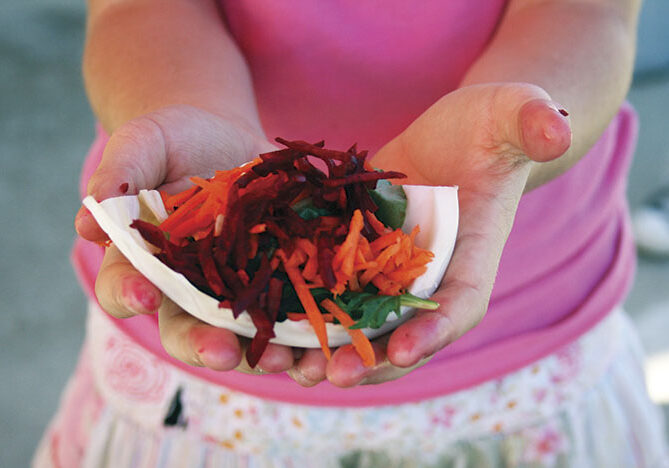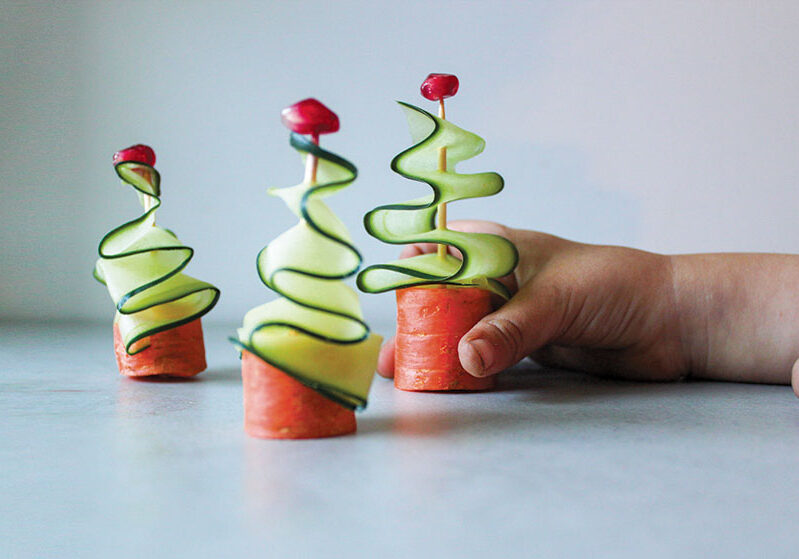 It’s the complementary crunch in a chicken salad, or the savory supplement in a stew. The fact is most of us use celery merely as an accessory in a tasty recipe. But good-tasting, good-for-you celery is a veggie that has no problem holding its own. The ancient Greeks touted its medicinal properties, and this versatile member of the parsley family is currently used as a nutritious food source worldwide. Jonny Bowden, PhD, aka “The Rogue Nutritionist,” includes celery in his book The 150 Healthiest Foods on Earth.
It’s the complementary crunch in a chicken salad, or the savory supplement in a stew. The fact is most of us use celery merely as an accessory in a tasty recipe. But good-tasting, good-for-you celery is a veggie that has no problem holding its own. The ancient Greeks touted its medicinal properties, and this versatile member of the parsley family is currently used as a nutritious food source worldwide. Jonny Bowden, PhD, aka “The Rogue Nutritionist,” includes celery in his book The 150 Healthiest Foods on Earth.
Every part of the celery plant – leaves, stalks, heart and root – may be eaten. Here are five reasons to start singing the praises of celery:
- Lowers Cardiovascular Disease Risk: “Studies have shown that celery lowers blood pressure via the compound phthalide, which works by reducing stress hormones that cause blood vessels to constrict,” says Dr. Christina Caselli of North Star Naturopathic Medicine in Mt. Shasta. “It has also been demonstrated that celery can lower total cholesterol and reduce platelet adherence in blood vessel walls, both of which can contribute to plaque buildup that causes heart attacks.”
- Fosters healthy bones. Celery is rich in Vitamin K, and studies have found this nutrient is important in both the development and maintenance of healthy bones. One cup of raw chopped celery (three seven-inch stalks) provides almost 40 percent of the recommended daily allowance of Vitamin K.
- Aids in weight loss. Celery is often cited as a “negative calorie food,” meaning more calories are burned in digesting it than are contained in the food. While experts debate the validity of this concept, there’s no question that celery is a good weight loss tool. At just 18 calories per cup, and with a high water and insoluble fiber content, this veggie can help you shed pounds.
- Conquers colds. Celery leaves are rich in flavonoid antioxidants and vitamins A and C. These nutrients help boost the immune system and may protect against cancer too. Vitamin A is necessary for maintaining healthy mucous membranes and good vision.
- Harmonizes happily. Celery is easily integrated into a wide range of specialized diets, from diabetic to paleo, from gluten-free to vegan. In her book Vegetarian Cooking for Everyone, Deborah Madison notes, “The clean taste of celery is a surprise to those who have never eaten it cooked. It’s so readily available and easy to work with, I urge you to try it.”
Tips for savoring celery:
Crown it “Queen of the Meal.” Use celery as a major component in a dish, rather than as a sidekick. Braise it by simmering several coarsely chopped stalks in a half-inch of chicken or vegetable broth, along with butter, salt and a few onions. Or make a snappy slaw with lots of finely chopped celery, raisins, and your favorite creamy dressing.
Go for the greens. Although often just thrown into a stockpot, don’t overlook celery leaves as a vibrant accompaniment. Use them in combination with other leafy greens in salads, or as a substitute for parsley or cilantro. Celery leaf pesto? Fabulous! (See recipe.)
Make it kid-friendly. Think outside the basic “ants on a log” snack. Add celery to smoothies, or finely chop it and spread it in a PBJ.
Grow it. Kids love this simple gardening project: Cut the celery base from its stalks. Set the base in a shallow dish of water. When new inner leaves start to turn green (in about a week), transfer to a planter. Cover celery base with dirt, except for the emerging leaves. Water well, and let it flourish – you may be buying less celery!
Celery Leaf Pesto
- 1 or 2 celery stalks, chopped
- 3 cups packed celery leaves (or part carrot leaf)
- 1/2 cup packed parsley leaves (optional), stems removed
- 2 cloves garlic
- 1/2 cup sunflower seeds (almonds and walnuts work too)
- 3/4 cup grated parmesan
- 1/2 cup olive oil
- 1 tbsp lemon juice
- Salt and pepper to taste
Combine all ingredients in a food processor and blend to a smooth paste. Toss with hot pasta, spread on crackers, or dollop onto baked fish. It freezes well and unlike basil pesto, celery leaf pesto retains its brilliant green color.
CELERY TRIVIA:
It is alleged that the Romans wore wreaths of celery to protect against hangovers. So that stalk of celery in your Bloody Mary may be more than a stirring device.
The “holy trinity” (or “mirepoix”) in French cuisine consists of celery, onions, and carrots.
Just one ounce of celery seeds is needed to produce one acre of celery plants.
Posted in: Localicious
Comment Policy: All viewpoints are welcome, but comments should remain relevant. Personal attacks, profanity, and aggressive behavior are not allowed. No spam, advertising, or promoting of products/services. Please, only use your real name and limit the amount of links submitted in your comment.
You Might Also Like...

Localicious: Sauerkraut – A Tradition Reborn, One “Culture” At A Time
You may wonder how our ancestors were able to preserve food without refrigerators, freezers, and modern canning techniques. Well, you could say that in addition to cellars, lacto-fermentation (lactic acid […]

Bake A Heart Shaped Chocolate Cake For Valentine’s Day
Conversation hearts and handmade heart cutouts, decorated with glitter and glue, litter my childhood memories of Valentine’s Day. It was a fun day, a time to tell others you cared […]

Three Tips For Creating A Lifetime Of Healthy Eating Habits In Children
Establishing healthy eating habits early in a child’s life is crucial to growing a healthy body and fostering a respect for nature’s best preventative medicine. As a nutrition consultant and […]

First Foods for Baby
Localicious: First Foods for Baby Hi, families with young babies. This one’s for you! Giving someone their first real taste of food can be so daunting. Let’s break it down […]



